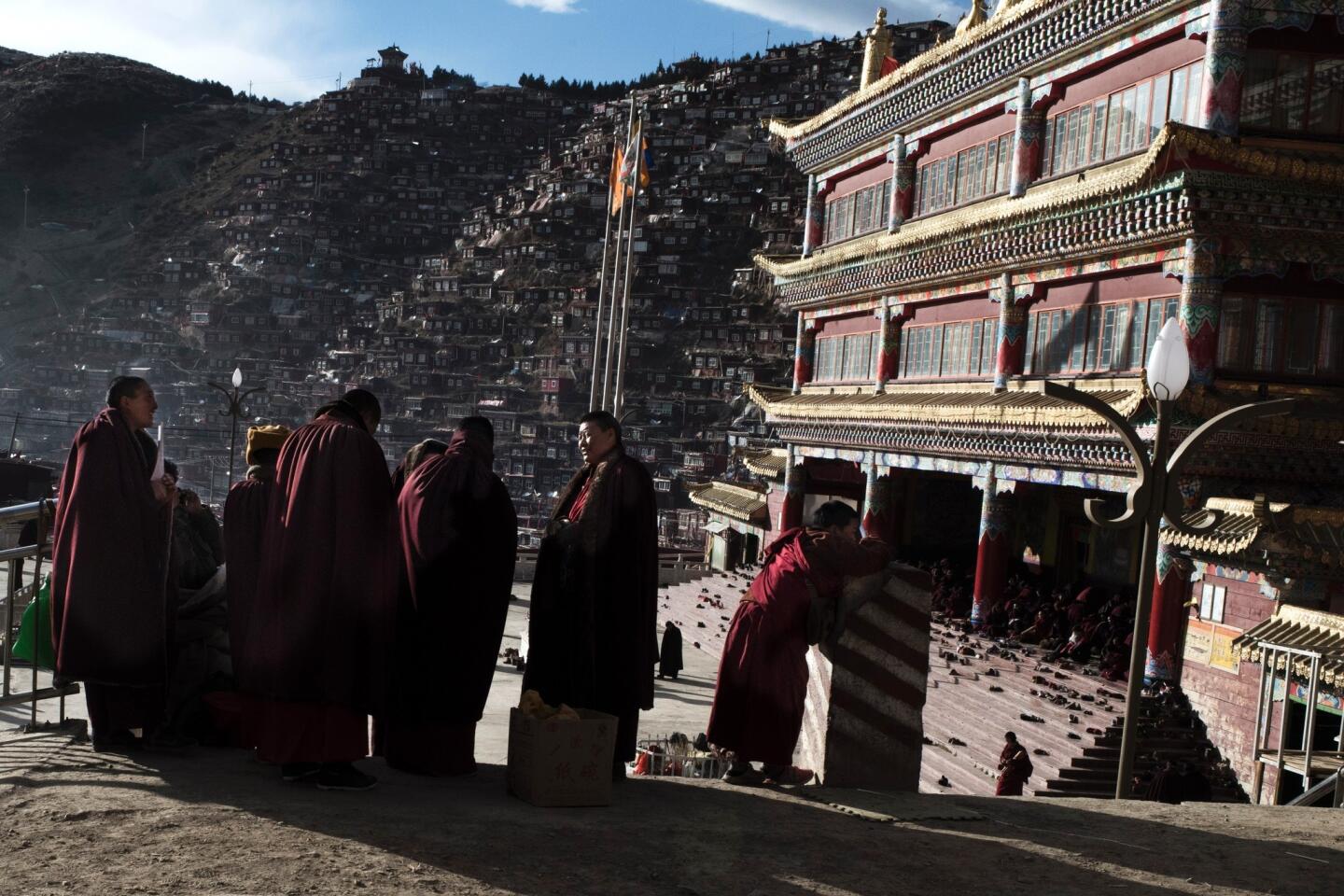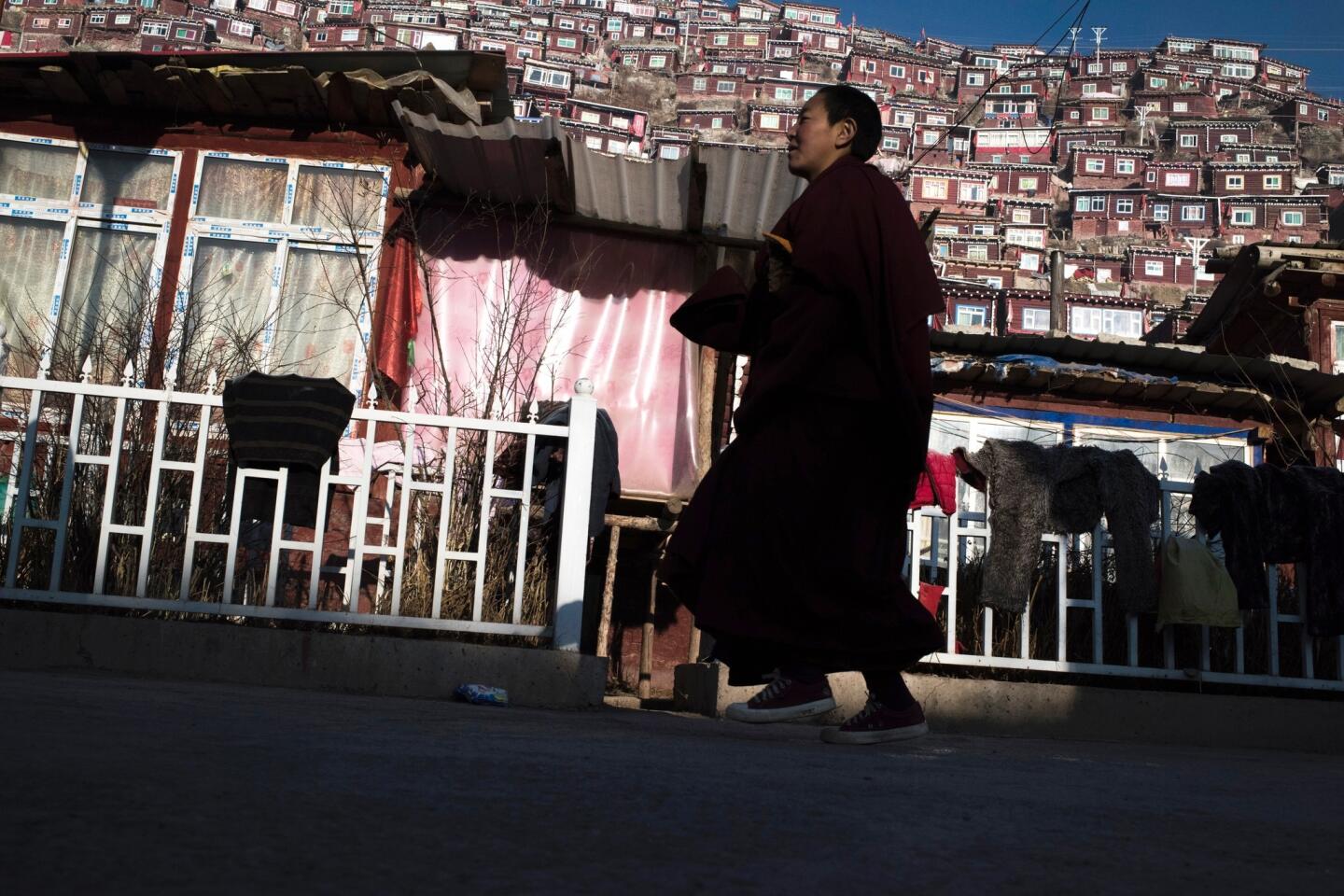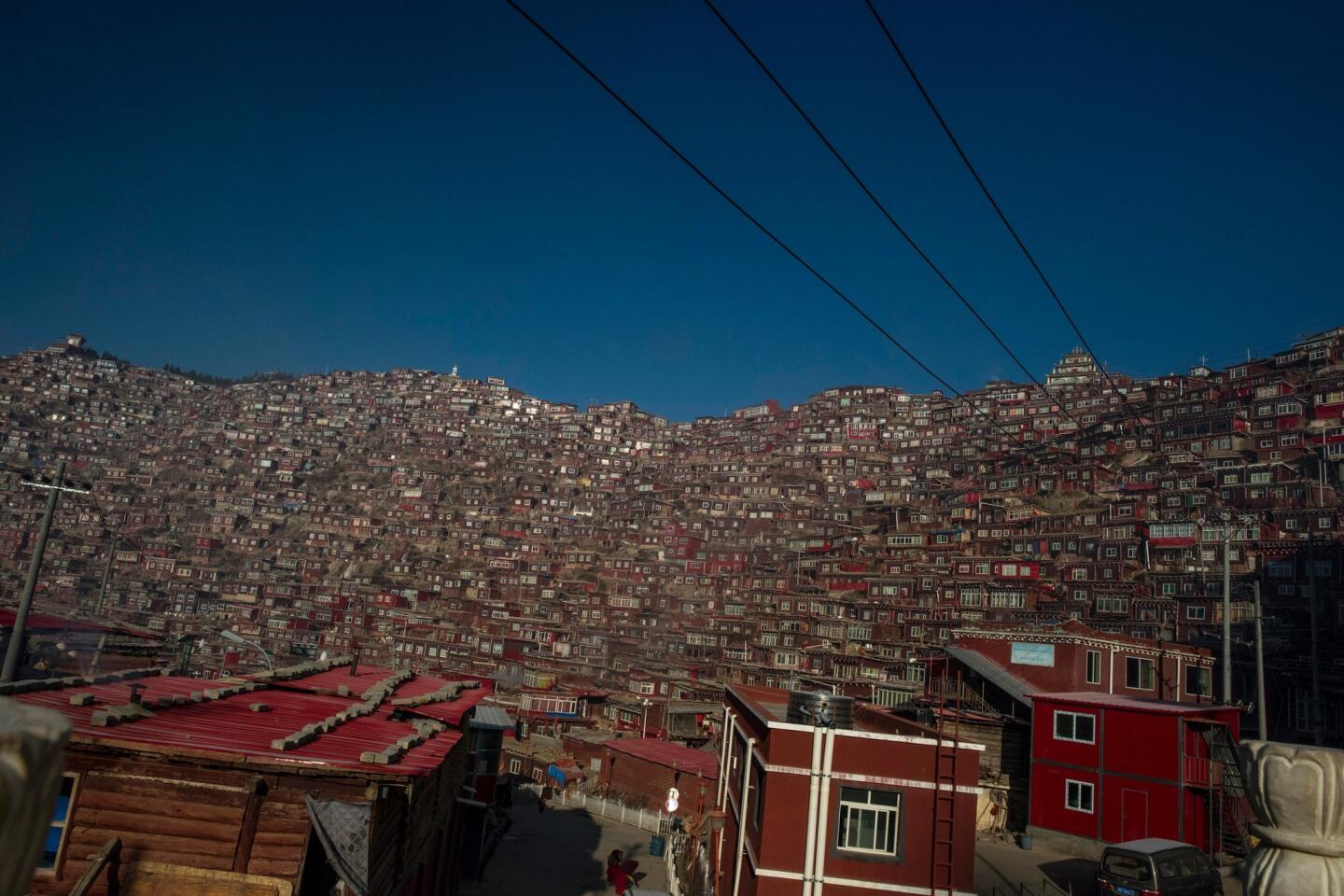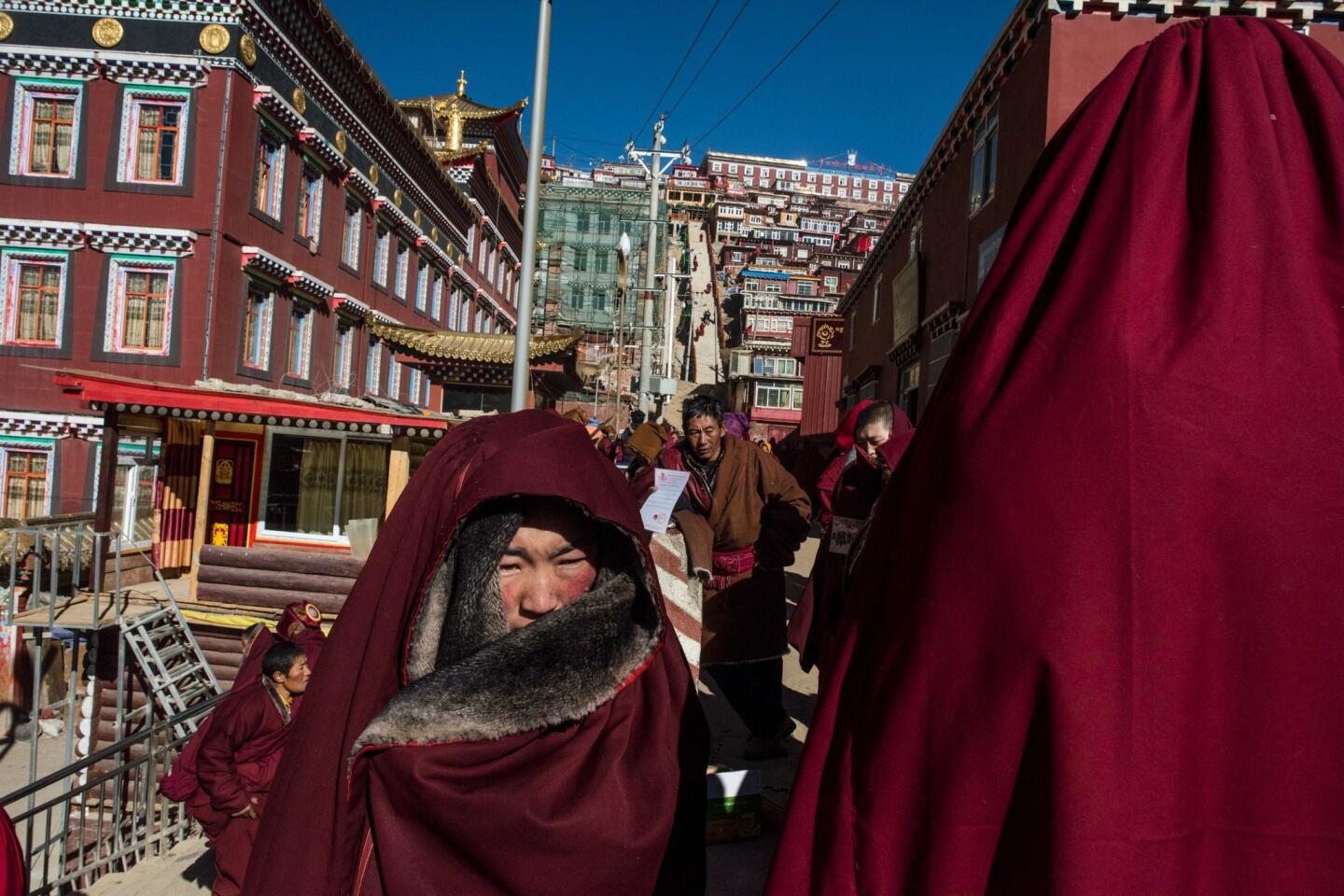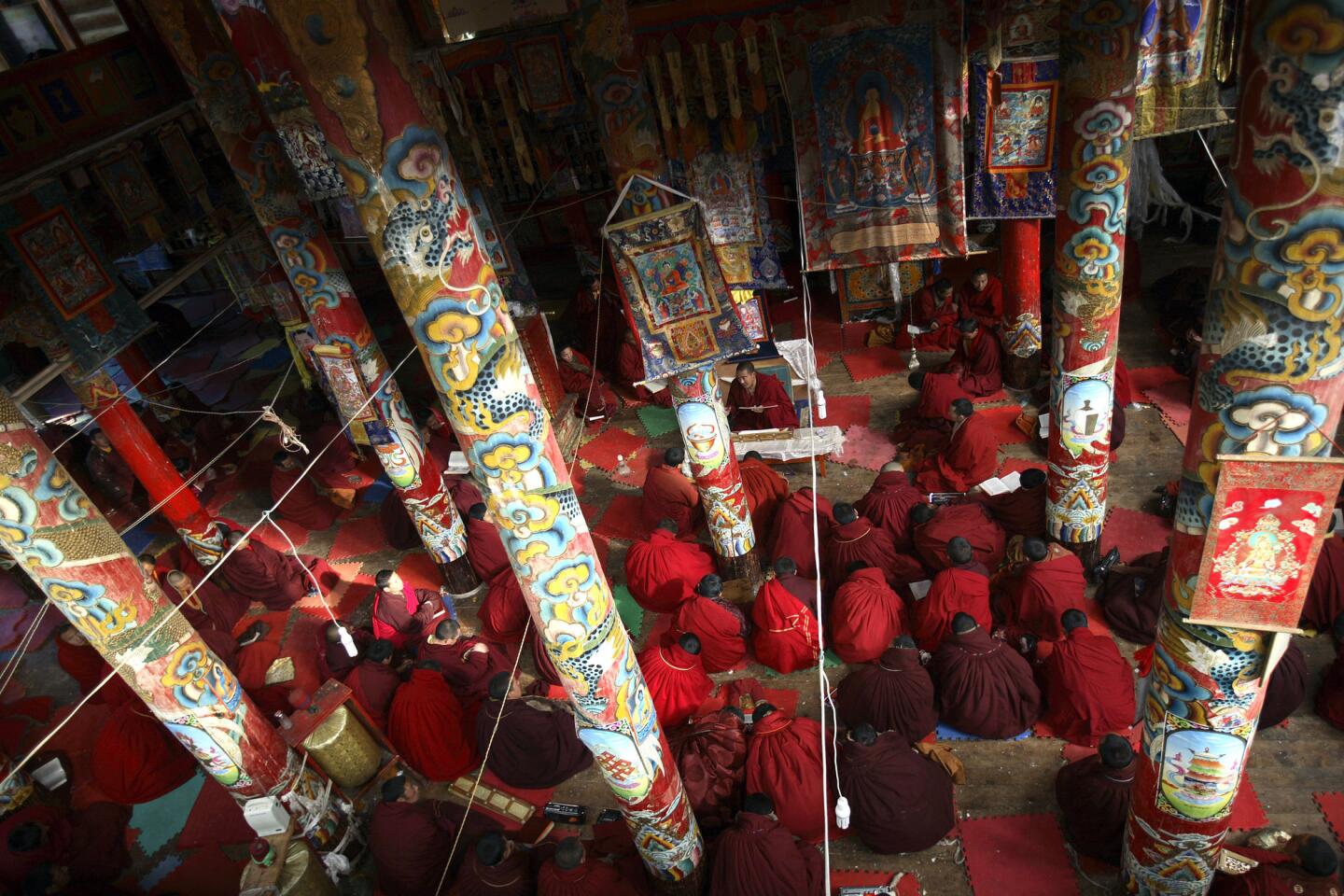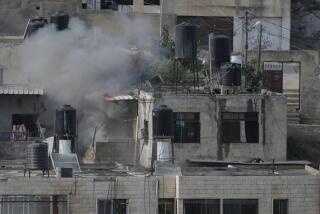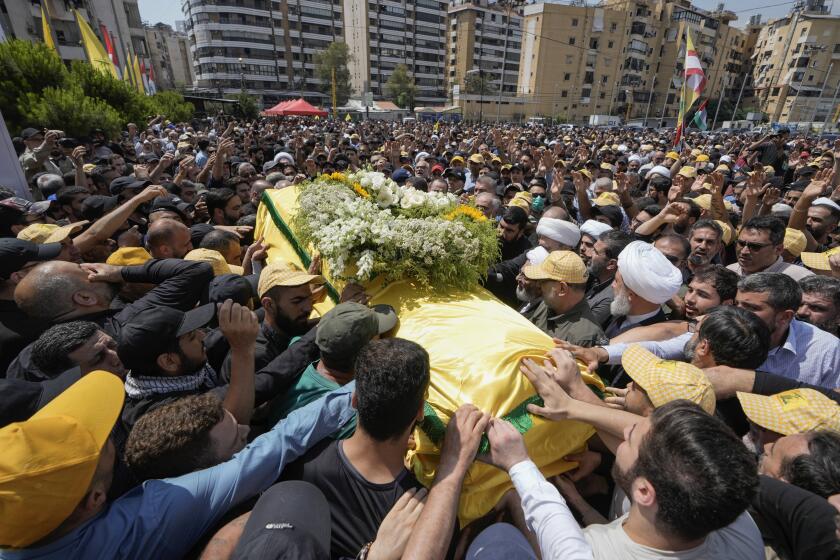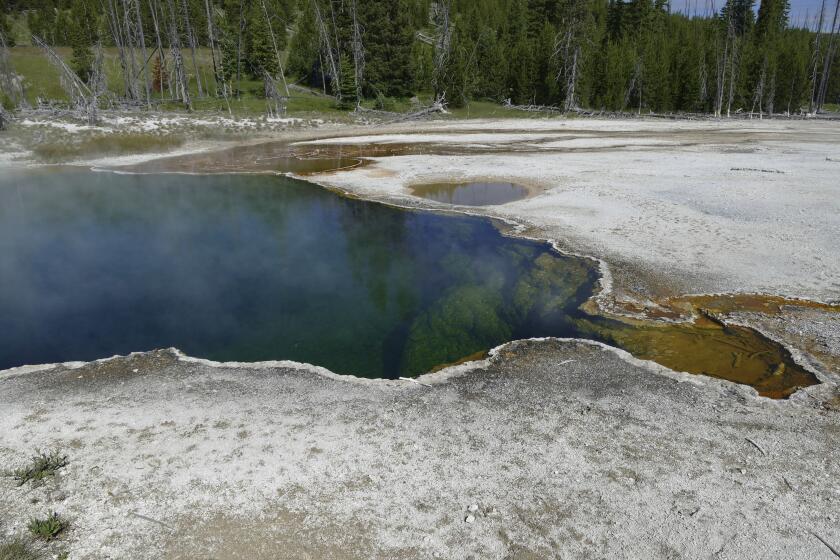For 2nd time in 15 years, Tibetan Buddhist academy in China faces demolition order
A large Tibetan Buddhist academy tucked in a remote valley of Sichuan province is under threat of large-scale destruction by Chinese authorities for the second time in 15 years, international human rights groups and scholars say.
Larung Gar, a picturesque settlement of red log-cabin dwellings set amid alpine hills, was founded in 1980 by a teacher named Khenpo Jigme Phutsok, a “living Buddha” who played a key role in reviving Tibetan Buddhism after the 1966-76 Cultural Revolution when religious traditions were forced underground.
Despite its remote location — the journey by car takes 20 hours over rough roads from the metropolis of Chengdu — the learning center has attracted adherents from Tibet and many other parts of China, as well as overseas.
In 2001, government officials forced thousands of monks and nuns to leave Larung Gar, sending in demolition crews to tear down their simple wooden structures. At the time, authorities at the provincial religious affairs bureau told Reuters and other media outlets that “concerns about social stability” from “central authorities” had prompted the evacuations and said that the settlement would be limited to 1,400 students.
Despite Khenpo Jigme Phutsok’s death in 2004, Larung Gar has rebounded, growing bigger than ever. In recent months, though, a notice from local officials began circulating saying that Larung Gar’s population needed to be reduced to no more than 5,000 residents by Sept. 30, 2017.
The document did not spell out a clear rationale for the downsizing, though it did cite two major government meetings during which President Xi Jinping stressed “national unity” and the necessity for religious groups to support the Communist Party and “merge their religious doctrines with Chinese culture.” Communist Party authorities have in recent years stepped up “political education” in monasteries as well as mosques.
The current population of Larung Gar remains unclear. Jesse Rockwell, a Santa Barbara resident who visited last month, estimated that 20,000 people were living there. Robert Barnett, a Tibet scholar at Columbia University, said it is “many times larger” than it was in 2001.
“How big is it? No one will say,” Barnett said. “Officials in the area don’t want to say because that will get them in trouble [with higher-ups], and the leaders of encampment won’t say because that would cause problems with the officials who tolerated the growth for the last 10 to 15 years.” But he said the demolition orders likely came from authorities outside the local area. “These places provide huge income, tourism and trade to the local government,” he said. “There’s not normally animosity at that level.”
Larung Gar was able to survive — and thrive — in part because of its unusual designation as an institute, rather than as a monastery. After the Cultural Revolution, monasteries generally were allowed to be rebuilt only at sites where monasteries previously existed. But Larung Gar began as sort of temporary encampment — Gar means “tent” — erected by students of the itinerant teacher.
As such, it remained outside the formal administrative structure that covers monasteries, Barnett said.
This May, word began surfacing in Sichuan newspapers that the demolition would soon get underway. The document said 2,200 people had to leave in 2016, including 1,200 monks and nuns who must be out by Oct. 20. The list of 5,000 people who will be permitted to remain should be finalized by Aug. 30, and no more than 1,000 may be from outside the province, it added. If the 5,000 number is not reached by 2017, the statement said, “the number of those to be expelled will be increased.”
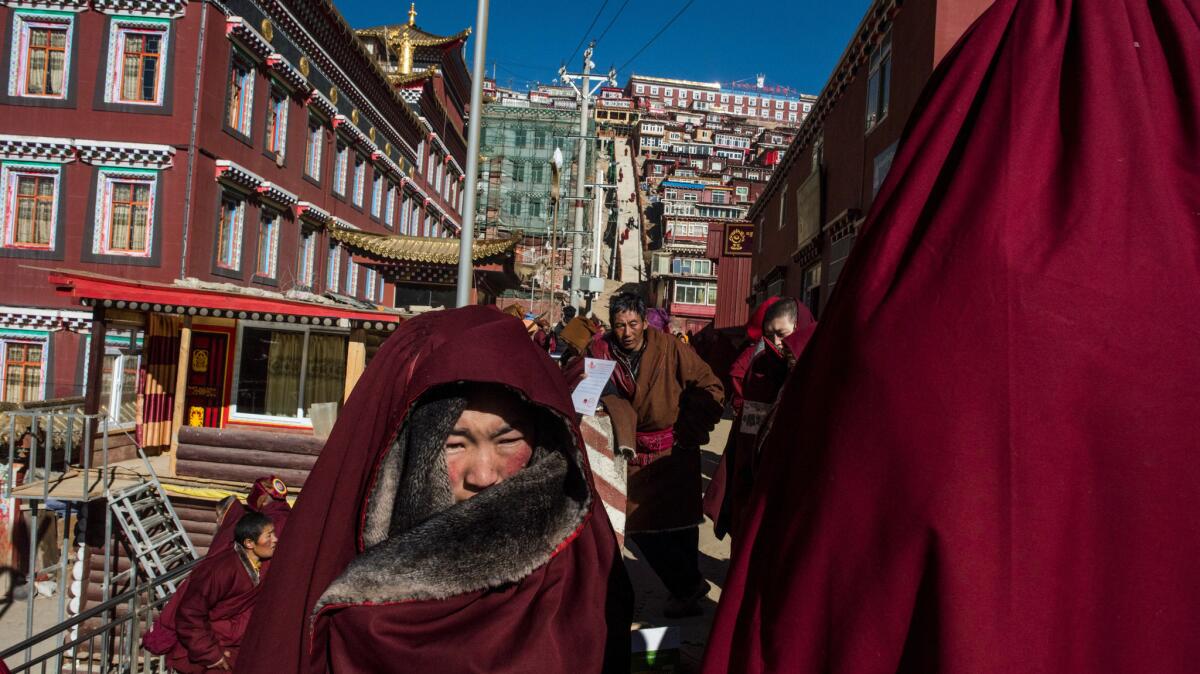
Human Rights Watch and Tibetan exile groups have called for the government to suspend the order. “China’s authorities should not be determining the size of monasteries or any other religious institution, but should accept that religious freedom means letting people decide for themselves their religious practices,” the Human Rights Watch’s China director, Sophie Richardson, said in a statement.
Larung Gar residents reported that removal of some structures got underway this week, though Barnett said those buildings were technically outside the designated perimeter of the settlement and their removal was not particularly controversial. A woman who answered the phone at the Sichuan Province Religious Affairs Bureau on Friday said she could not provide any information.
But the next stage — which Barnett said could start Monday — may be more controversial, with demolition of nuns’ homes within the perimeter.
Rockwell said that there was “a bit of uneasiness” in Larung Gar when he visited, and he was stopped by police who demanded to see his passport. He was denied permission to stay in Larung Gar and had to go to a town about 20 miles away.
He said construction crews with earth movers, bulldozers and backhoes were busy building a new road and some facilities at the entrance to the valley. Another overseas traveler who recently tried to visit Larung Gar said she was turned away by police who told her there was construction and renovation work going on that was “dangerous to foreigners” — though Chinese tourists were allowed to proceed.
Larung Gar is known as a progressive Buddhist community that extols equality between the sexes and ethnic groups; community decisions are made through voting. Although Khenpo Jigme Phutsok once met with the Dalai Lama in India, Larung Gar is not seen as being directly affiliated with the exiled Tibetan spiritual leader, whom the Communist Party regards as a separatist, Barnett said.
Human Rights Watch noted that some online reports had suggested a public safety rationale for the demolitions at Larung Gar, such as promoting better sanitation and minimizing fire risks. But the group said such concerns “cannot be a pretext to adopt discriminatory measures against specific religious groups.”
Barnett said administrators of the academy had been making their own efforts to improve infrastructure, such as building new dormitories for nuns. Some senior leaders had tried to persuade the community to voluntarily downsize to head off such a confrontation with officials, he said, but they were outvoted. Now they are trying to advise community members to stay calm.
“The lamas … are asking people to be calm and not to protest. But it’s not like 2001. We’ve had — what is it? — five years of self-immolations, massive protests in 2008 and so on. The language of resistance is rife throughout China and Tibet,” Barnett said. “Lamas are trying to keep things calm and say if we downsize now, we may have a chance to negotiate things in a year’s time. But it may be difficult for them to persuade people that’s going to happen.”
Nicole Liu and Yingzhi Yang in The Times’ Beijing bureau contributed to this report.
Follow me on Twitter @JulieMakLAT.
More to Read
Sign up for Essential California
The most important California stories and recommendations in your inbox every morning.
You may occasionally receive promotional content from the Los Angeles Times.
